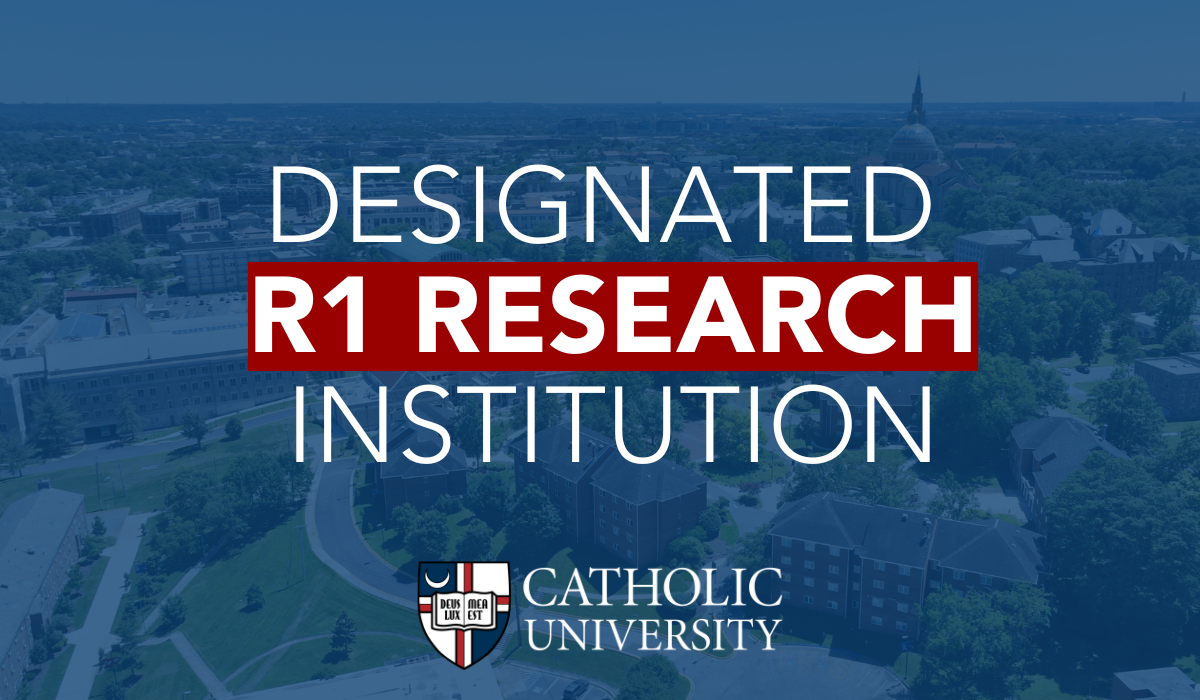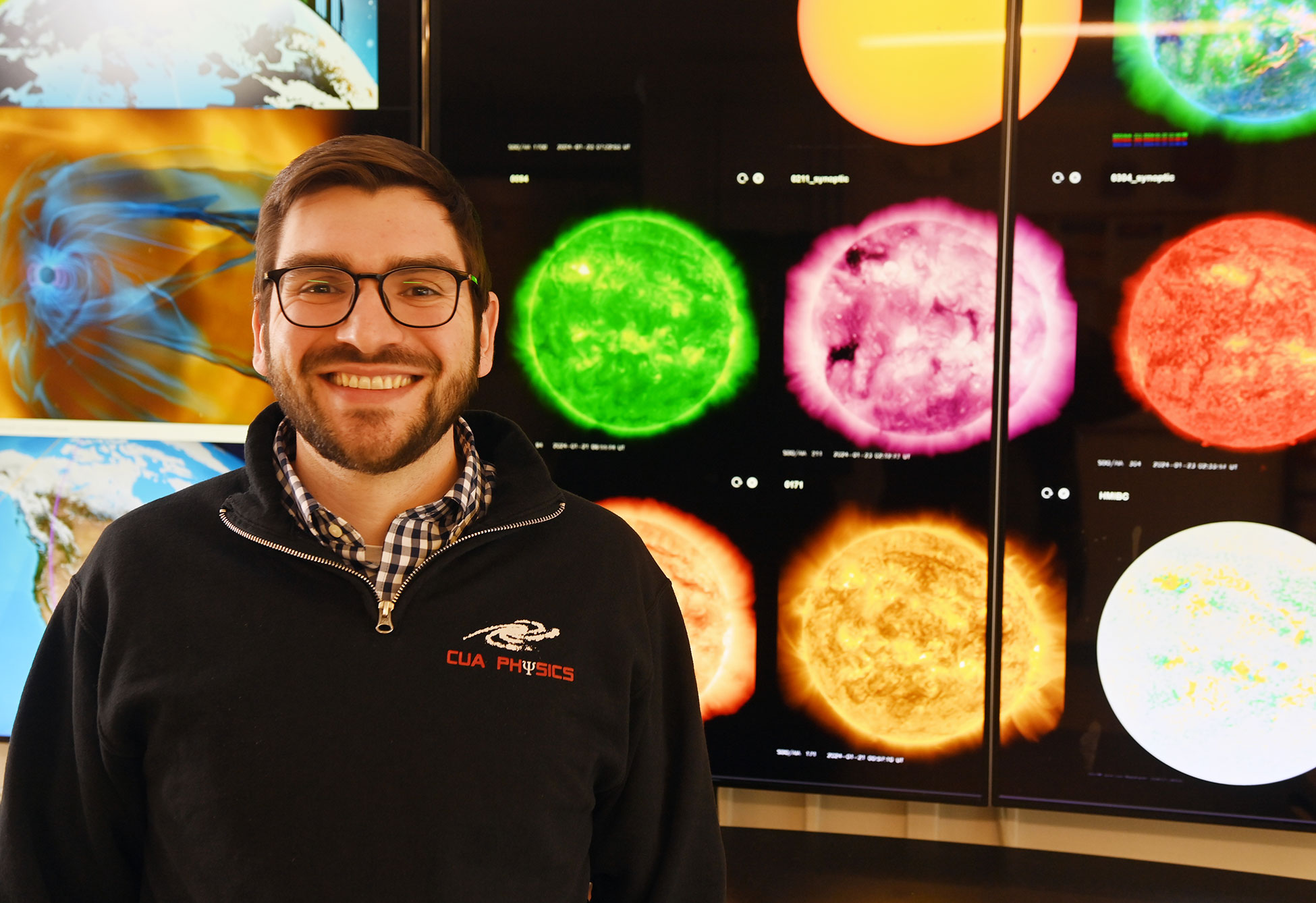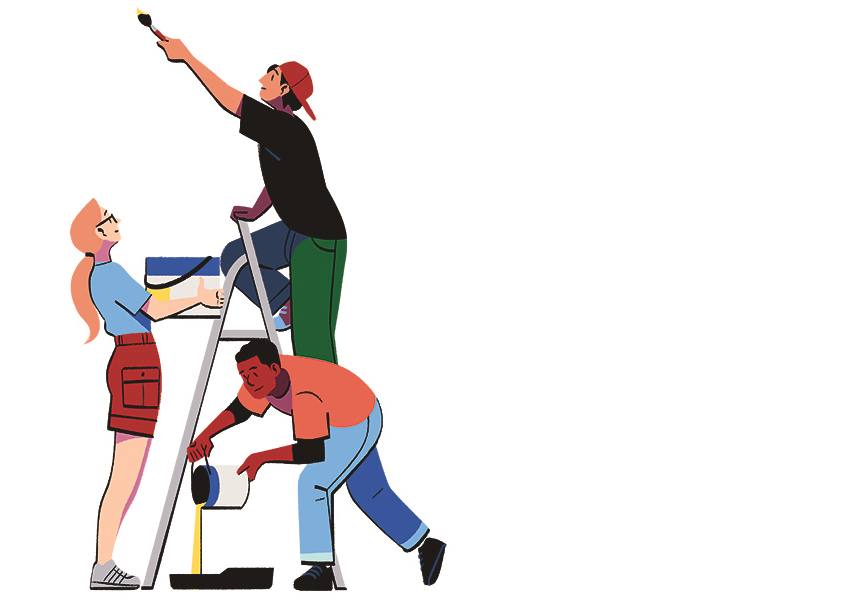The Catholic University of America has achieved R1 research status, joining the top tier of the nation’s research universities. The R1 designation — which is shorthand for “Very High Spending and Doctorate Production” — is conferred by the Carnegie Foundation and the American Council on Education and is America’s gold standard for university research. Only 187 American colleges and universities are R1 institutions.
The R1 designation is reviewed and awarded every three years. To qualify in 2025, universities must, on average in a single year, spend at least $50 million on research and development and produce at least 70 research doctorates. Catholic University qualified with research expenditures above $50 million and 94 research doctorates awarded.

“R1 status is a recognition of our roots and our future,” explains Aaron Dominguez, Ph.D., senior vice president for academic affairs and provost. “We were founded to be the research university for the Catholic Church in the United States, so this is simply a further actualization of who we are as a research university.”
The Road to R1: Lights on the Path
Soon after arriving at Catholic University in 2016, Provost Dominguez began advocating for the University to aim for R1 status. While the project would require significant growth in research programs and funding, as well as several years of strategic planning, Dominguez believed that it was feasible.
Among the many factors along the way that contributed to successfully growing the University’s research programs and attaining R1 recognition, two in particular stand out for Dominguez: (1) hiring more than a dozen faculty members to endowed professorships; and (2) securing H. Joseph Yost, Ph.D., to the University’s newly created senior vice provost of research position.
Yost is leading the University’s effort to build the research infrastructure that supports faculty and student research; and the newly endowed professorships have attracted top-notch faculty who are drawing in academically gifted graduate students with them.
There’s a false narrative out there that you can’t be a research university and be faithfully Catholic. That’s simply not true and we’re proving it.”
Most importantly, Catholic University has remained focused throughout the journey on its identity and mission.
“As the only Newman Guide university with R1 status, all the research we do is always 100 percent in alignment with the Catholic Church,” Dominguez notes emphatically. “There’s a false narrative out there that you can’t be a research university and be faithfully Catholic. That’s simply not true and we’re proving it.”
Noting various current research efforts from artificial intelligence to exploring the universe or addressing major social issues, Yost adds, “There’s innovation happening in a lot of different areas on campus, but all of this is very focused on the Catholic view of what it means to be a human, made in the image and likeness of God.”
What's Next?
“The Carnegie R1 status is a recognition of where we are and where we’re going…. It was never a goal in and of itself, but a mile marker,” Yost says, providing context for the importance of the achievement and how Catholic University will use it to benefit the research and innovation it creates and shares with the world.
The University will preserve its historic strength in the humanities and sacred sciences and will simultaneously continue to grow its externally funded research by sustaining already strong relationships with NASA, the National Science Foundation, the National Institutes of Health, and the U.S. Department of Energy; but it will also build new partnerships with the U.S. Navy, the U.S. Department of Defense, as well as with other universities, foundations, and individual benefactors.
The R1 designation and these new partnerships will also pave the way for increased research opportunities for Catholic University students. As growing numbers of students get the chance to work elbow-to-elbow with top-notch researchers, they will participate in an intellectual experience that will tutor them in lifelong learning, whether they ultimately continue in research or not.
To promote new research, discovery, and innovation, Yost is launching The Catholic University of America Innovation Fund with help from a generous donor. The fund will support competitions among teams of faculty and students for seed money to assist them in pursuing an idea they are studying and researching. Yost explains that often these new ideas need to grow first before they can be competitive enough to acquire funding from an external source.
These efforts and many others are underway as Catholic University continues its upward research trajectory. Recent growth in external funding included big, single-year gains, such as the $10 million boost between fiscal years 2020 and 2021 and the $12 million jump between fiscal years 2022 and 2023. Dominguez and Yost expect fiscal year 2024 funding to top $54 million.





